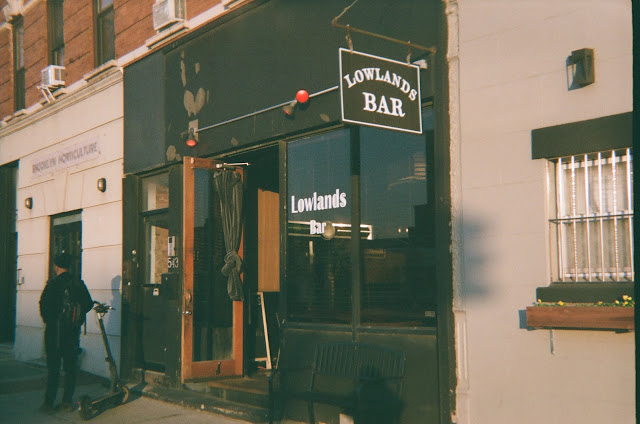Guest Post: The Fate Of The Tenor – A Technical Addendum
KS: It's been a month since the release of The Fate of the Tenor, and I've been really happy with the response from listeners and friends who had a chance to listen. On that note, I'd like to share a guest post that my dear friend Juanma Trujillo graciously put together for the occasion, which describes his approach and thought process regarding the live recording. Juanma and I have worked together for years not only as performers, but also on the actual recording, mixing, and production of a number of my releases.
* * * * *
The Fate Of The Tenor – A Technical Addendum
By Juanma Trujillo
By the time Kevin reached out to me to record this album, I had already sold and shipped out a lot of my gear as I was moving out of the US. I had my two nicest ribbon mics, and Kevin had a few mics of his own that we used. Some of the other mics were sourced among our community of musician friends and engineers (a detailed list is provided with the liner notes). Everything was recorded through Kevin’s 8-channel Focusrite interface and to his laptop into a Logic session (The Fate of The Tenor is only 8 channels of audio).
I tried to use mostly ribbon and dynamic mics to minimize bleed. Dynamic mics are very directional and usually do a great job of rejecting any sounds from the sides. Ribbons take sound in a figure-8 pattern from the front and back, usually having extremely good rejection from the null point on the sides. If you aim the side of the mic toward the soundsource you want to reject, you can usually cut a lot of bleed that way. (If you see the picture of Walter from the gig, you'll notice that the ribbon mic I placed in front of his bass has its sides aimed at the drums, which would be the main bleed source I'd want to minimize).
 |
| Photo courtesy of the author, dated June 21, 2022 |
The only condenser mic used on this recording was a Schoeps small-diaphragm condenser on the bass, which was only usable because we had a mic arm that attaches to the side of the bass (both items courtesy of Simón Willson—thanks, Simón). That was really important because in this setting, the bass is most likely to suffer in terms of capture. The bass arm allowed us to have a pretty close mic between the bridge and the F hole, giving a lot of definition and snap to the capture. The Schoeps is a very high-quality mic with a pretty flattering frequency response, but without ideal placement, it really doesn’t matter how good the gear is. The ribbon was placed in front of the bass and helped give the sound some size as well as captured some of the bleed from the bass amp behind Walter, giving some presence to the overall capture. It was definitely a win that we were able to get by without taking a DI from the bass, as it’s usually a sound that no one likes to hear.
The sax had one ribbon plus a dynamic with capsules aligned for phase, achieving a good balance of dark and bright sounds (although I reckon the overall sax sound on TFOT is slightly darker than on some of the studio records I’ve mixed for Kevin; he usually leans more towards an "airier" sound—check it out on some of those other records).
The drums had a pretty standard 4-mic setup: dynamics on both kick and snare and ribbons on overheads. Famously, overheads are THE single most important element of a kit in a jazz recording (a lot of the staple records we all love from Rudy Van Gelder were made with a well-placed single overhead on drums). The SE Electronics X1R was a pleasant surprise on the overheads. Not trying to turn this into an ad, but as entry-level gear goes, these are great. I really like the drum sound on TFOT. I only say this to discourage the notion that you need super fancy gear to get good results; we had a few nice pieces of equipment, but good mic technique and proper setup trump anything else. I really believe that.
Other elements that further helped the recording were some sound panels we placed behind the kit to cut some of the immediate reflections from the back wall. And we all showed up with ample time to optimize the setup. I wanted the band to perform as comfortably as they would in any other setting, so I asked them to set up as they normally would. From there, I slightly adjusted their positions to optimize the mic setup on my end. The whole point of a live record is to capture the rapport of the group, so you wouldn't want the band to be in an uncomfortable position for them to play or hear each other. As far as acoustics, Lowlands is actually a nice-sounding room, which is likely one of the reasons it's had quite a bit of success as a venue.
Lastly, I attribute the success of the sonics to the band. They just sound good, know the music by memory, have a good ear for balancing their dynamics, and they LOVE playing at Lowlands. Put simply, they were having fun! That’s really important.
I hope reading this gives you greater insight and appreciation for this music.
Juanma Trujillo's Howl is due out July 12, 2024 via Endectomorph and features some saxophone by yours truly, plus Andrew Schiller on bass and Matt Honor on drums.

Comments
Post a Comment